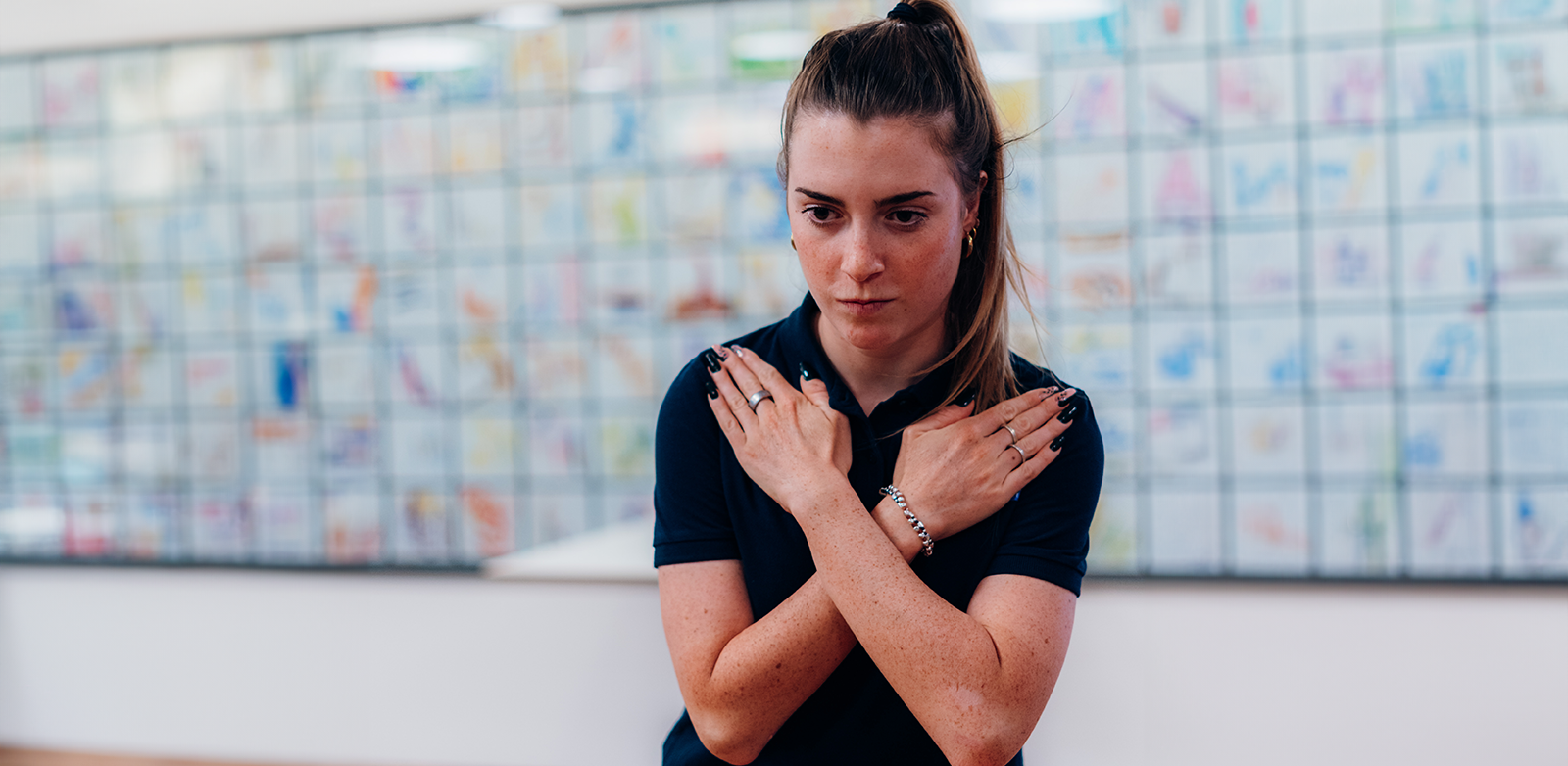
Fit and injury-free on the bike: Prevention and care at AG Insurance – Soudal

Fit and injury-free on the bike: Prevention and care at AG Insurance – Soudal
Since 2023, Jessica Van Melkebeke has been part of the AG Insurance - Soudal team as a physiotherapist. Her work focuses on preventing and treating injuries among cyclists, an essential aspect of performance in cycling. She shares her approach to injury prevention, the common injuries within the team, and the specific exercises that are effective for this purpose.
Common injuries and risk areas
"As a physiotherapist, I mainly see neck and shoulder pain, back pain, and saddle sores," Jessica explains. "Knee and Achilles tendon issues are also common, often due to overuse. We can often prevent these injuries by adjusting the bike fit and implementing targeted, preventive exercise therapy."
Injury prevention within the team is aimed at avoiding this overuse. Through bike fit analyses and tailored exercises, many issues can be addressed early on. "Proper adjustment of the bike fit is essential to reduce the risk of these injuries," Jessica emphasizes.
Effective exercises for injury prevention
Core stability is one of the main pillars of preventive programs. "A stable core is the foundation for every movement on the bike," Jessica explains. "We use variations of plank exercises and deadbugs to strengthen the core. Additionally, specific strength exercises for the glute and thigh muscles, along with stretching to address flexibility limitations, are essential." This set of exercises provides a strong, balanced foundation that helps prevent injuries.
To avoid injuries, the team works with personalized programs, considering the individual risk factors of each cyclist. "We adjust the exercises based on injury data and monitor progress. It’s important to prevent overuse, so we modify the exercises in their program when necessary."
Preventive measures and recurrent injuries
Recurrent injuries are a point of focus within the team. Jessica lists some preventive steps that help with this:
- Optimizing bike fit
- Targeted strength and stability exercises tailored to specific and individual deficiencies
- Flexibility and mobility exercises
- Recovery and monitoring to maintain the balance between load and capacity
- Education and cycling technique to make cyclists aware of the impact of posture and movement
By carefully implementing these preventive steps, the risk of injuries and overuse remains low. "The combination of education and technique helps cyclists better understand what their body needs to ride pain-free," Jessica says.
Essential measurements and tests for injury prevention
Jessica emphasizes the importance of various physical measurements and tests that serve as the foundation for injury prevention programs:
- Bike fit analysis: An accurate bike fitting ensures an optimal posture, minimizing the strain on knees, back, and shoulders.
- Strength and stability assessments: We test the strength and stability of the main muscle groups, as well as the balance between the left and right sides of the body, to identify weaknesses and asymmetries.
- Flexibility and mobility tests: Focusing on the hips, hamstrings, and lower back – areas essential for cyclists – these tests help increase range of motion and prevent injuries.
- Effort tests: By regularly conducting effort tests, the team can detect signs of fatigue or overuse early on. "These effort tests allow us to adjust the training program immediately if necessary to prevent injuries," Jessica explains.
"These measurements help us identify personal risk factors and create a targeted prevention plan," says Jessica. This enables the team to address weak points and improve the cyclists' performance without injuries.

 GB
GB
 NL
NL
 FR
FR